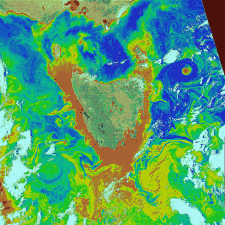Biogeochemical Cycles
Cycling of Elements between Life and the Ocean
Life and climate are intimately connected through the cycling of elements present in both living tissue and gases which make up the atmosphere – such as CO2 and methane – which influence the ability of the atmosphere to radiate energy. The partitioning of carbon between atmospheric CO2 and inorganic forms in water and sediments, for example, is strongly modulated by living creatures.
The biogeochemical cycles of carbon and other important elements such as nitrogen, phosphorus, sulfur, and iron are now being massively perturbed by human activity in ways we are only beginning to appreciate. By any measure, there remains a great deal to learn in identifying and understanding the primary biogeochemical cycles that affect the climate system.
Modeling Biogeochemical Cycles
Researchers at MIT have developed and continue to refine models that allow marine ecosystems and biogeochemistry to be coupled to global ocean circulation models. These are used to study the role of ocean circulation and its variability in controlling and modulating global biogeochemical cycles and the interplay between climate and biogeochemical processes. We are also using tracers to extract quantitative information about the rates of communication between the surface and the deep ocean.
Key Questions We’re Exploring
- What are the biological, chemical, and dynamical processes that control the partitioning of carbon between the oceans, land, and atmosphere?
- Can we understand the cycles of biologically important trace metals such as iron in the oceans, how they have changed in the past, and how they might change in the future?







